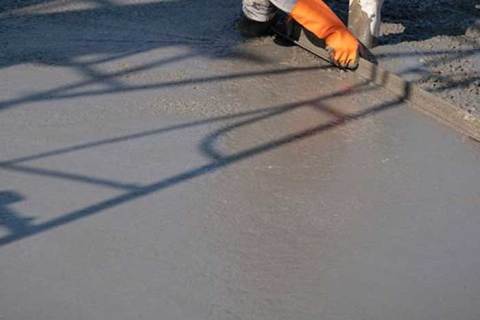
- Home
- >
News
Lithium carbonate (Li₂CO₃) is a valuable additive in concrete and cement that significantly enhances material performance. It effectively suppresses alkali-silica reactions (ASR), reducing expansion and cracking while improving durability. Additionally, it enhances concrete’s permeability and freeze resistance, making it more suitable for harsh climates. Lithium carbonate accelerates cement hydration, leading to faster strength development and construction progress. It also lowers cement alkalinity, mitigating the effects of corrosive substances and extending the material’s lifespan. Overall, lithium carbonate improves performance, durability, and cost-efficiency in modern construction projects.
Hydroxypropyl Methylcellulose (HPMC) serves as a high-performance building material modifier that plays a crucial role in the construction industry. Its outstanding adhesive properties, rheological property adjustment, and water resistance make it widely used in products such as cement mortar, tile adhesives, and coatings. By enhancing adhesion, improving water resistance, and adjusting rheological characteristics of building materials, HPMC brings innovation to the construction sector, establishing itself as an indispensable material.
HPEG products are reshaping modern architecture by offering durability, sustainability, and aesthetic enhancements. Architects are turning to these materials to strengthen structures and reduce maintenance through their unique properties. With HPEG additives, buildings gain resistance to environmental stressors while enabling creative designs with vibrant colors. This integration not only bolsters aesthetics but also supports sustainable practices by minimizing waste. HPEG products are driving innovation in architecture, fostering resilient and visually striking built environments.
1. HPMC element uniformity Homogeneous reaction of hydroxypropyl methyl cellulose, methoxy, hydroxypropoxy evenly distributed, high water retention rate.
Lithium carbonate, a white solid mineral, has attracted much attention due to its wide range of applications in many fields. First, from a chemical perspective, lithium carbonate has excellent thermal stability and electrochemical properties, allowing it to be studied and applied as a new material in the construction industry. According to the latest research report in the magazine "Building Science", lithium carbonate can improve the heat resistance and compressive strength of building materials under certain conditions, significantly improving the safety and durability of buildings.
Concrete is an indispensable and important material in construction projects, and its performance directly affects the quality of the project. In recent years, researchers have discovered that adding lithium silicate to concrete mortar can significantly improve the strength, durability and crack resistance of concrete.
VAE Re-dispersible Polymer Powder is a white or light-colored polymer powder, which is the main additive for dry-mixed mortars such as cement-based or gypsum-based mortars. Mainstream products include vinyl acetate and ethylene copolymer rubber powder (VAC/E), ethylene, vinyl chloride and vinyl laurate ternary copolymer rubber powder (E/VC/VL), vinyl acetate and ethylene and higher fatty acid vinyl ester terpolymer rubber powder. Yuan copolymer rubber powder (VAC/E/VeoVa).
Water: Hydroxypropyl methylcellulose is soluble in water, and the aqueous solution is surface active, highly transparent and stable.
Lithium silicate is an emerging positive electrode material for lithium-ion batteries, which has excellent characteristics such as high energy density, high voltage platform, and long cycle life. Compared with traditional lithium cobalt oxide and lithium manganese oxide, lithium silicate has obvious advantages in energy density, safety and cost, and has become the first choice for new energy vehicles and large energy storage systems.
Polycarboxylic acid series high-performance water reducing agent is a new generation of high-performance water reducing agent appearing at home and abroad in recent years. Compared with naphthalene series and other traditional superplasticizers, polycarboxylic acid series high-performance superplasticizers have many unique technical performance advantages:
With the development of the modern construction industry, concrete technology continues to advance. Among them, HPEG as a new type of high-efficiency water-reducing agent, has attracted widespread attention due to its unique performance and environmental protection characteristics. This article will explore the use of polycarboxylate superplasticizer monomers in the construction industry and the benefits they bring.
1. Lithium carbonate has excellent performance as an early strength agent in mortar, which can significantly improve the early strength of mortar, so that in practical applications, it can effectively improve construction quality and save concrete construction costs







![[Additives for mortar] VAE Re-dispersible Polymer Powder](https://img.waimaoniu.net/3193/3193-202403061048086409.jpg?x-oss-process=image/resize,m_fill,w_480,h_320)




